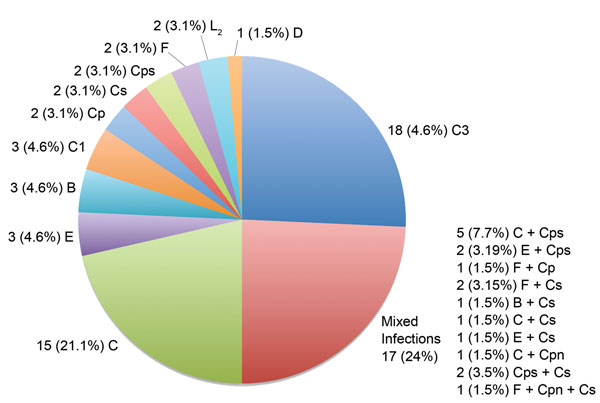Volume 19, Number 12—December 2013
Research
Zoonotic Chlamydiaceae Species Associated with Trachoma, Nepal
Figure 1

Figure 1. . . Chlamydiaceae infections among 101 villagers residing in a trachoma-endemic region of southwestern Nepal identified by the ArrayTube (Alere Technologies, Jena, Germany), real-time PCR, and ompA genotyping. The number and percentage for each infection are shown. Single infections included each species and the designated ompA genotypes (n = 71). C. trachomatis (Ct) trachoma strain C predominated, but single infections with C. psittaci (Cps), C. pecorum (Cp), and C. suis (Cs) also occurred). Mixed infections included those with Ct, Cps, C. pneumoniae (Cpn), Cp, and Cs.
Page created: November 19, 2013
Page updated: November 19, 2013
Page reviewed: November 19, 2013
The conclusions, findings, and opinions expressed by authors contributing to this journal do not necessarily reflect the official position of the U.S. Department of Health and Human Services, the Public Health Service, the Centers for Disease Control and Prevention, or the authors' affiliated institutions. Use of trade names is for identification only and does not imply endorsement by any of the groups named above.